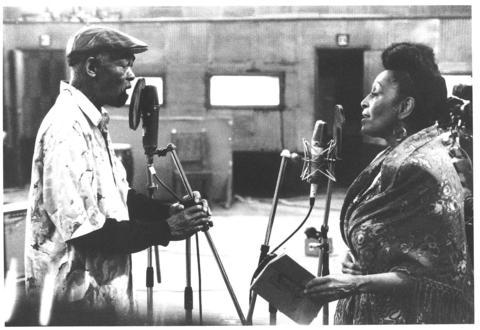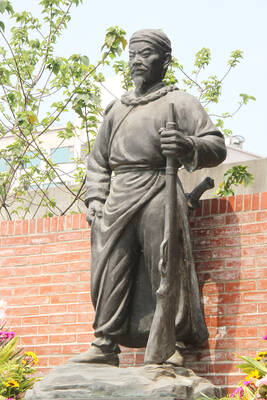History hands out its titles and Omara Portuondo was given the sobriquet "Cuba's Edith Piaf" after becoming the voice of her country and a generation. An innovative and stylish interpreter of a variety of musical styles, her career peaked artistically in the 1950s and 1960s but the album and 1999 documentary Buena Vista Social Club brought belated worldwide fame.
Like Wim Wenders' postcard-perfect film, Portuondo encapsulates a faded but romantic image of Cuba that is spirited, independent, passionate, impossibly romantic yet tinged with sadness. A performer for 60 years, she said in an e-mail interview translated from Spanish that her earliest musical influences in Havana, where she was born, were parental.
"They used to sing a lot at home and those songs were the first I ever listened to, for instance: La Bayamesa from Ernesto Grenet y Sindo Garay, or Veinte Anos from Maria Teresa Vera." Jazz kings like Nat King Cole and the Glenn Miller Orchestra also inspired her to start singing, she said, first at friends' homes and small clubs, then as part of a succession of groups, notably the female vocal quartet, Cuartet D'Aida, with her sister. She entered the world of show business in the chorus line at El Tropicana.

"They were looking for a dancer because one of them could not participate at the premiere. And because I went to all the rehearsals, I was the only one who could help them out. At first, I refused the offer as I was very shy and the idea of showing my legs dancing was not very pleasing to me. Imagine, I was only 15 years old. But my mother told me that I should do it, because that way I could help other people. So that is how I started in this world."
She made a name for herself singing in the "vieja trova" style of the 1920s and 1930s, covered the dance standards of the 1940s and was known for being the definitive interpreter of "filin" [feeling], a Cuban-jazz sound and bolero, "a ballad with a little black beans on the side."
Today, she is as active ever despite her advanced years and her country's political isolation since the Cuban missile crisis in 1961 (she used to perform in the US with her sister, who stayed). She is still touring the world and producing albums, such as last year's Flor de Amor.
"I think that it is my most personal album with songs that go straight to the heart. Probably a reason for this has been the inclusion of other influences. Different cultures always enrich one's own and Flor de Amor has the fine mix of our culture and Brazil ... Finishing the project and now touring with a symphony orchestra is like a dream come true. This is something I have always wanted to do and next year we will start a world tour."
As for the comparison with the talented and totemic Edith Piaf, Portuondo accepts the compliment with grace but points out she did duet with the French icon and has had other nicknames over the years.
"For me Edith Piaf was a great star, a very complete artist and being compared with her makes me feel very proud. It was a long time ago when my sister, Haydee, and I used to meet some friends every weekend: Cesar Portillo de la Luz, Jose Antonio Mendez and the pianist Frank Emilio Flynn. We were called the Loquibamba Swing and we played at that time what we started to call `Feeling.' We made American jazz standards but with a Cuban touch and influenced by bossa nova too. Once in a radio program, the journalist started calling me the `Feeling girlfriend' and from that moment I have kept the nickname. Also `Omara Brown.'"
Like many musicians, however, Portuondo has had her trials and after the first flush of Communist revolution she was farmed out cultural revolution-style to sing in the fields and inspire the workers. She toured as an international musical ambassador during the 1970s, but in the late 1980s she practically "retired" and only became known to the world once more a decade later through the work of Ry Cooder. Her solo album, The Buena Vista Social Club Presents Omara Portuondo, released in 2000,confirmed her status as a jazz legend.
"It was very interesting to work with Ry Cooder. [He] knows Cuban music very well, he is a studious man and he works with great respect. It's for this reason that the music for Buena Vista Social Club keeps the original roots and passion of the original composers."
"Our music in this recording was original, nothing was changed. With this work Ry spread out our music internationally, so everybody could enjoy it. Wenders' film picked up what that moment was, the reunion and the recording, and we all know that cinema is a very important diffusion source."
As for her life in Cuba today, Portuondo said, "I am a very calm person but I like having an active life. In Havana I drive my own car and I always have things to do. I like sharing things with my friends and spend a lot of time with family, with my son, his wife and my beautiful grand-daughter. I love swimming and of course I do all of these things once I come back from my tours.
"Touring makes me feel very active and fills me with a great desire for life. I cannot wait to be in Taiwan and feel the audiences' warmth. We have a very complete show and great musicians, and we will all give our best."
Portuondo will be playing two nights at the Sun Yat-sen Memorial Hall, beginning tonight, and has brought over long-time band members and the Buena Vista Club artists' musical director. When Portuondo sings she lifts a song above the level of genres and makes it personal, a beautifully crafted piece of musical poetry. Technically gifted, with great timing, presence and personality, she is at her best live according to critics, among them the reporter from the San Francisco Chronicle who dubbed her Cuba's Edith Piaf.
Finally, this could be a last chance to see the musical legend and it should be remembered that Ibraham Ferrer -- who can forget his tear-jerking duet Silencio with Portuondo in Buena Vista Social Club? -- died aged 78 in August. Da Da Arts, has been negotiating for five years to bring Portuondo over and her concerts should be special occasions, especially on Saturday when her 75th birthday will be celebrated.

One of the biggest sore spots in Taiwan’s historical friendship with the US came in 1979 when US president Jimmy Carter broke off formal diplomatic relations with Taiwan’s Republic of China (ROC) government so that the US could establish relations with the People’s Republic of China (PRC). Taiwan’s derecognition came purely at China’s insistence, and the US took the deal. Retired American diplomat John Tkacik, who for almost decade surrounding that schism, from 1974 to 1982, worked in embassies in Taipei and Beijing and at the Taiwan Desk in Washington DC, recently argued in the Taipei Times that “President Carter’s derecognition

This year will go down in the history books. Taiwan faces enormous turmoil and uncertainty in the coming months. Which political parties are in a good position to handle big changes? All of the main parties are beset with challenges. Taking stock, this column examined the Taiwan People’s Party (TPP) (“Huang Kuo-chang’s choking the life out of the TPP,” May 28, page 12), the Democratic Progressive Party (DPP) (“Challenges amid choppy waters for the DPP,” June 14, page 12) and the Chinese Nationalist Party (KMT) (“KMT struggles to seize opportunities as ‘interesting times’ loom,” June 20, page 11). Times like these can

JUNE 30 to JULY 6 After being routed by the Japanese in the bloody battle of Baguashan (八卦山), Hsu Hsiang (徐驤) and a handful of surviving Hakka fighters sped toward Tainan. There, he would meet with Liu Yung-fu (劉永福), leader of the Black Flag Army who had assumed control of the resisting Republic of Formosa after its president and vice-president fled to China. Hsu, who had been fighting non-stop for over two months from Taoyuan to Changhua, was reportedly injured and exhausted. As the story goes, Liu advised that Hsu take shelter in China to recover and regroup, but Hsu steadfastly

You can tell a lot about a generation from the contents of their cool box: nowadays the barbecue ice bucket is likely to be filled with hard seltzers, non-alcoholic beers and fluorescent BuzzBallz — a particular favorite among Gen Z. Two decades ago, it was WKD, Bacardi Breezers and the odd Smirnoff Ice bobbing in a puddle of melted ice. And while nostalgia may have brought back some alcopops, the new wave of ready-to-drink (RTD) options look and taste noticeably different. It is not just the drinks that have changed, but drinking habits too, driven in part by more health-conscious consumers and